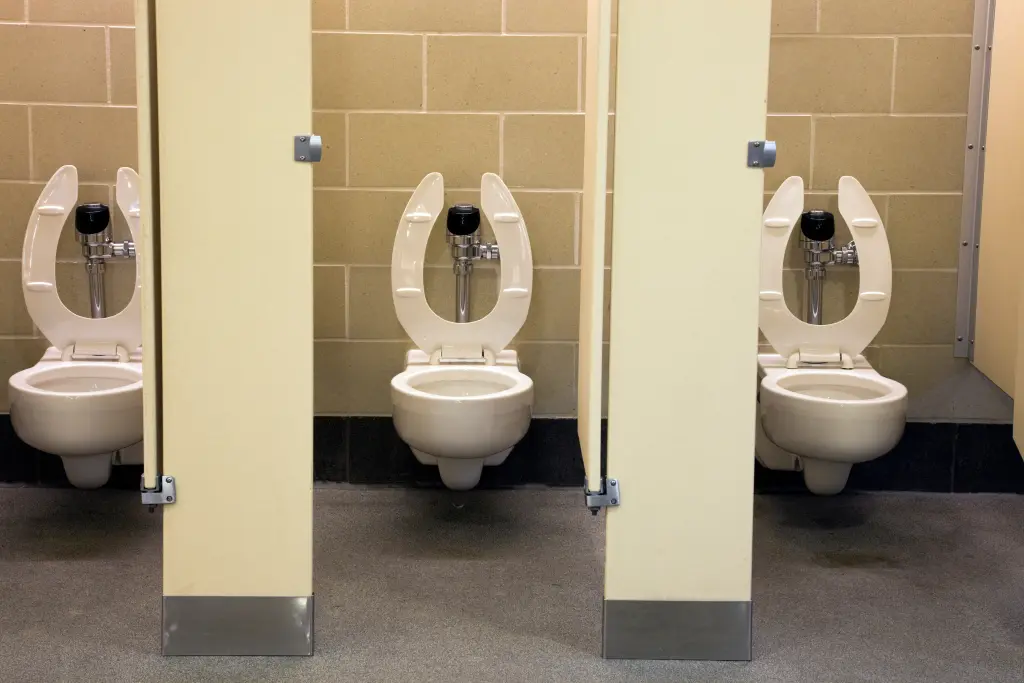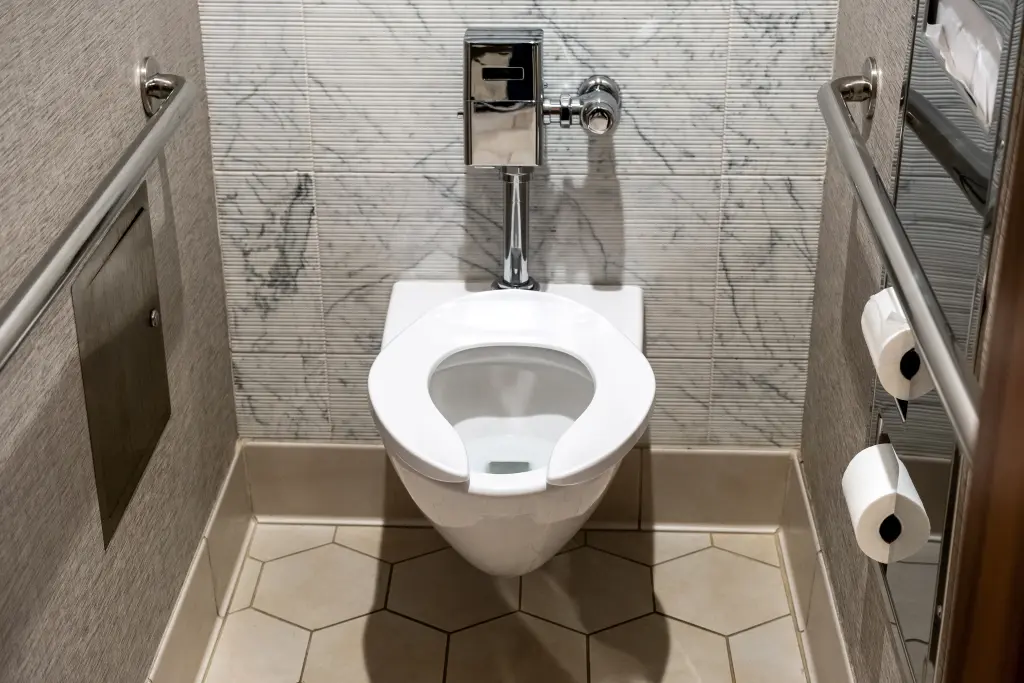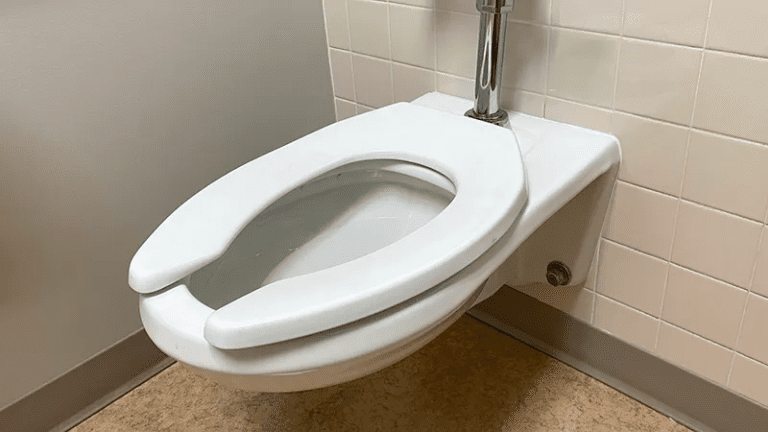Have you ever wondered why public restrooms often have U-shaped toilet seats instead of the closed, circular seats you see at home? It’s a subtle detail that you might not have thought twice about, but this unique design actually serves a significant purpose. While there’s no shortage of theories about the open-front toilet seat, the truth behind this simple innovation is surprisingly practical—and it just might change how you view public restrooms forever.
The Mystery of the U-Shaped Toilet Seat

At a glance, the open-front seat design might seem like a minor difference, but it has sparked plenty of curiosity. Some people think that the U-shape is all about hygiene, while others believe it’s more about accommodating different body types. There’s even speculation that it helps protect the porcelain by directing urine away from the seat.
So, what’s the real reason? The answer is both practical and rooted in health and safety standards. As it turns out, the horseshoe-shaped toilet seat is designed to reduce the risk of contamination and promote better hygiene in public restrooms.
A Hygienic Design with a Purpose
The primary purpose of the open-front toilet seat is to minimize the risk of contact with bodily fluids. According to Hugo Aguilar, the Senior Vice President of Codes and Standards at The International Association of Plumbing and Mechanical Officials (IAPMO), “Open front seats and elongated toilet bowls for public restrooms minimize the risk of the user coming in contact with possible contamination from a previous user.” By leaving a gap at the front of the seat, users are less likely to come into contact with urine or other residues that might be left behind.
The open design also allows for easier cleaning and better access to the seat’s surface, which is essential in high-traffic areas where thorough cleaning might not always be possible. And because the seat doesn’t form a complete circle, it helps users avoid touching the areas that are most likely to be contaminated.
A Practical Solution for Women’s Health
The American Society of Plumbing Engineers explains another benefit: the open-front seat was designed with women’s hygiene in mind. The U-shape makes it easier for women to wipe after using the toilet without their hands or tissues brushing against the seat. This subtle difference in design provides an extra level of cleanliness and comfort for female users, who can avoid direct contact with the seat when attending to personal hygiene.
Dr. Poonam Desai, a health expert, has also pointed out that women who “hover” over the toilet to avoid contact with the seat may be unknowingly straining their pelvic muscles, potentially leading to incomplete bladder emptying. The open-front seat not only helps with hygiene but also encourages users to sit down, which can help avoid long-term health issues.
Code Requirements for Public Restrooms
In fact, the design isn’t just about preference—it’s also part of building codes in many areas. The IAPMO’s Uniform Plumbing Code specifies that toilets used by the public must have open-front seats, or alternatively, they should provide automatic seat cover dispensers. This requirement helps ensure a basic level of hygiene and user safety in public restrooms. Not every state follows these exact plumbing regulations, but the U-shaped seat has become standard across much of the United States.
Reducing the Gross Factor: How Open Seats Improve Public Hygiene

Let’s be honest—public restrooms have a reputation for being a little grimy. According to reports, public bathrooms are often hotspots for germs, with some facilities lacking basic amenities like soap or toilet paper. This lack of cleanliness can be a major deterrent for people who may decide to hold it until they get home rather than using a public toilet.
The open-front toilet seat can help mitigate some of these hygiene issues by reducing the amount of contact with contaminated surfaces. When users sit down on a closed, circular seat, there’s a higher likelihood of direct contact with any residue left by previous users. By contrast, the open seat design naturally reduces this risk, making the experience slightly less unpleasant and reducing the chances of transferring germs.
Avoiding the Hovering Effect: Why Sitting is Better for You
When faced with a public restroom that’s less than pristine, many people opt to “hover” over the seat to avoid touching it. But hovering, as Dr. Poonam Desai explains, can actually do more harm than good. Hovering strains the pelvic muscles and can lead to an incomplete emptying of the bladder, which may increase the risk of urinary tract infections over time.

Instead, Dr. Desai recommends wiping the seat or using a disposable toilet seat cover, which can provide a layer of protection while allowing you to sit comfortably. Sitting also reduces the likelihood of splashing, which helps keep the restroom cleaner for the next person. The open-front seat is designed to facilitate this kind of seated usage, contributing to better personal health outcomes and overall restroom cleanliness.
A Simple but Effective Solution to Common Concerns
The U-shaped toilet seat might seem like a small innovation, but it addresses multiple practical concerns in public restrooms. By allowing for easier wiping, reducing direct contact, and encouraging seated usage, the open-front design contributes to better hygiene and safety. And as a bonus, it’s easier for custodial staff to clean, which can help maintain restroom standards in high-traffic areas.
When you consider these benefits, it’s clear that the open-front toilet seat serves a valuable purpose beyond mere aesthetics. While it may not solve every hygiene issue associated with public restrooms, it plays a role in minimizing risks and promoting better practices for all users.
Embracing the Little Things that Make a Big Difference

The next time you find yourself in a public restroom, take a moment to appreciate the simple design of the open-front toilet seat. It’s a small detail that can have a big impact, helping to reduce contamination and protect users in environments that are often less than sanitary. Although public restrooms may never be spotless, understanding the reasons behind their design can give us a new perspective—and perhaps a little extra peace of mind.
Conclusion: The Open-Front Seat’s Role in Public Health
While it may seem like a minor feature, the open-front toilet seat is actually a well-thought-out solution to a common problem. It’s designed to promote hygiene, reduce the risk of contact with contaminants, and improve the experience of using public restrooms. The next time you encounter one of these U-shaped seats, remember that it’s there for a reason. By embracing practical solutions like these, we can make public spaces a little more bearable and a lot more sanitary.
In the end, the humble open-front toilet seat is more than just a design choice—it’s a small but significant step toward better public health and hygiene. So, whether you’re at a gas station, airport, or restaurant, you can take comfort in knowing that even the smallest details have been considered to make your experience just a bit cleaner.